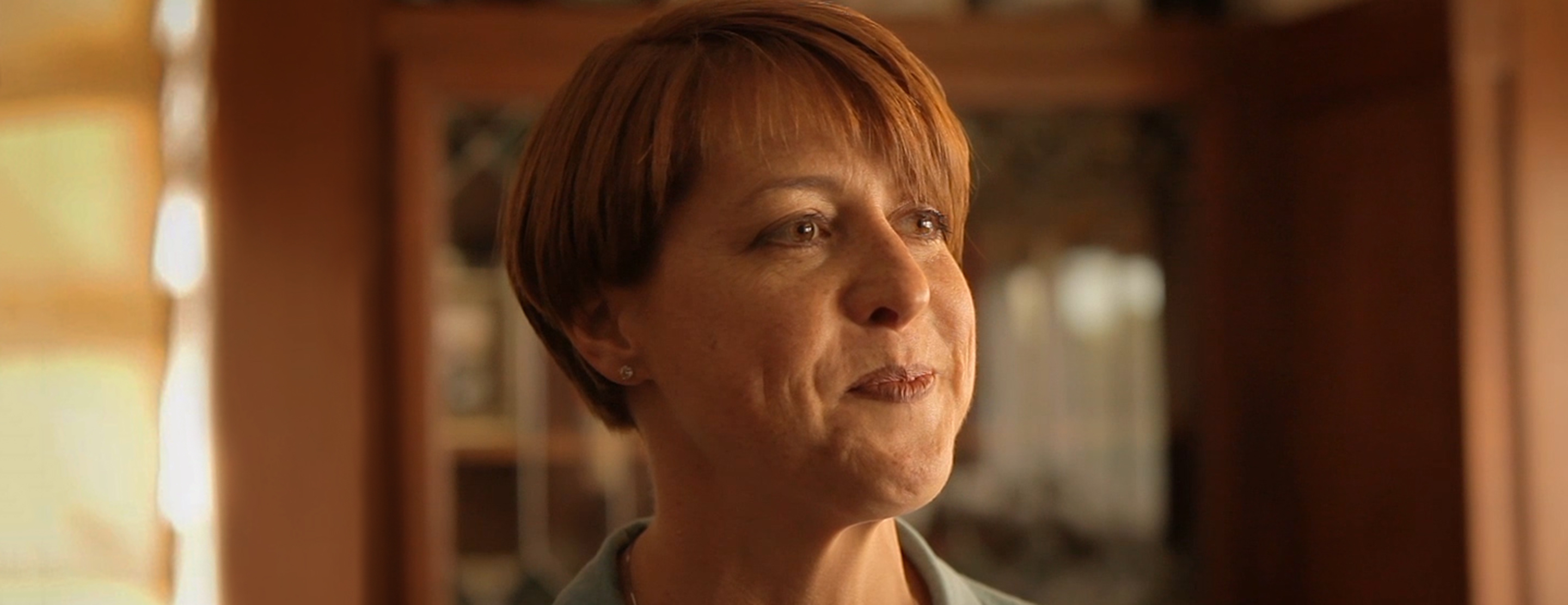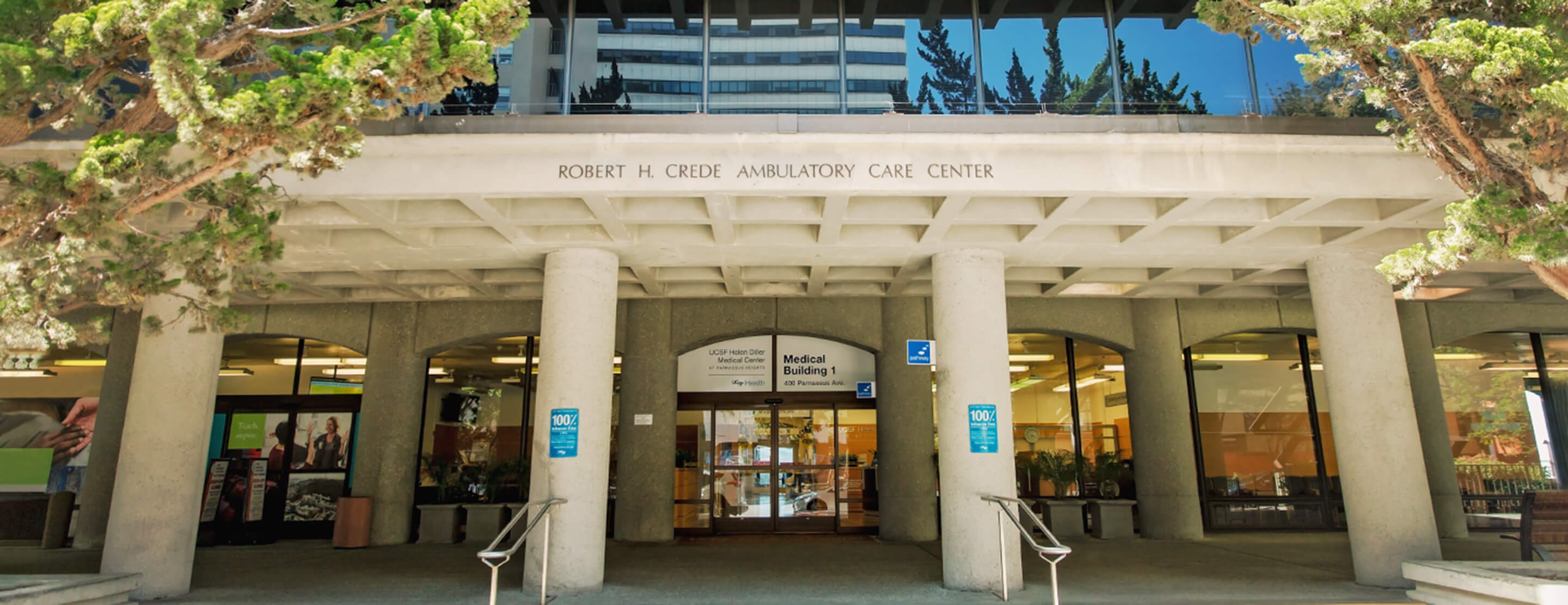Amy Baghdadi was living a perfectly normal life – working as a lawyer and raising two young kids with her husband in San Francisco. While she was training for a half-marathon, her side would ache after long runs. She figured it was just a pulled muscle, but one evening the pain was so excruciating that her husband convinced her to go to the emergency room. An ultrasound revealed that her liver was full of tumors, which were quickly diagnosed as cancer.

Cancer Patient Receives the Gift of a Lifetime
After an aggressive chemotherapy regimen failed, Baghdadi was running out of treatment options. Liver transplant was a possibility, but most medical centers don't consider cancer patients for transplants.
With the clock ticking and her cancer possibly spreading, Dr. John Roberts and Dr. Nancy Ascher, a UCSF husband-and-wife transplant team, performed a living donor liver transplant on Baghdadi. The transplant was a success. Baghdadi and her donor, Olivia Lemen, have fully recovered, and the experience has created an enduring bond between them.
Why were you turned down at other hospitals for a transplant?
I think because my cancer was very aggressive and I had some nodules in my lungs that may or may not be cancerous – we still don't really know. If cancer has metastasized, people generally aren't candidates for the transplant, so there was a lot of concern that my cancer had already spread and therefore I wasn't a viable candidate. It was too high a risk.
How much did you know about liver transplants before?
Before I became ill, I knew very little about the process of organ donation other than filling out the form at the DMV. I didn't know that the liver can regenerate, that a living donor can give you part of their liver, and that their liver can grow back and the transplant liver will grow to full size within the recipient.
Meet Amy's care team
Why was UCSF willing to perform a transplant on you?
I had an interesting conversation with Dr. Roberts about the surgery and the potential for success. One of the concerns, of course, was that someone in my situation has the potential for recurrence of cancer; you don't want to waste a good organ on a person who is just going to get the cancer again. Dr. Roberts said to me, "Even if we can only buy you five years, we are giving you five more years when advances in medical science are so great that, who knows, we could have a cure." It was incredibly heartwarming that he would take that risk on me and give me that time.
In the year since my transplant, they have found the genetic markers that they believe is the cause of the very rare type of cancer that I have, which is the first step toward finding a cure. If my cancer were ever to come back, which hopefully it won't, there is a possibility that by that time, I will be in a much better place.
How did you look for a living donor?
It was a real struggle to contemplate asking loved ones to potentially put their own lives at risk to save mine.
I had been writing an email every week or so, explaining my situation and what was going on with treatment. Everyone knew at that point that I was looking at transplants. So I wrote in an email that a living donor was a possibility for me and sort of tongue-in-cheek said, "If you are Type 0, under the age of 55, you are healthy, and you want to get rid of half of your liver, think about it." Crying copiously over my keyboard I thought, "How can I do this?" It was really hard but if I don't send it, I'm going to die. I looked at my kids and I had to at least try. So I hit Send.
How many responses did you get to that email?
We were overwhelmed at the responses we got from people who said they would do it or wished they could do it. I think we had eight people ask about the application packet, which is the first step in being considered to be a donor.
Were you floored by the generosity?
Absolutely; it was unbelievable. It was really hard to think about any of the people who stepped forward going into surgery and putting their life at risk. But I was also so incredibly grateful and felt proud to know these amazing people who would step up to help someone in such an unselfish way. It made me feel very blessed to have such wonderful people in my life.
How did Olivia become your donor?
When Olivia heard about my situation and we talked, something clicked. It was absolutely like this was what is meant to be. Olivia met all the criteria – she was healthy, she was taller than me, she was young and perfect in every way. Plus, knowing her as a person, I knew that this is someone I could do this with. You can't say that about everybody because it is such an emotional process. You have to be so incredibly close. I think that was something that felt right immediately.
How did you know Olivia?
My mother is a retired public school teacher and so is Olivia's mother. They taught together for over 25 years in Santa Rosa.
Describe the day of the surgery.
We spent the night at the hospital, got up very early in the morning and were taken to be prepped for surgery. In the prep room I could hear Olivia's voice on the other side of the curtain, so we asked if we could open the curtain. We held hands as they were getting us both ready.
I went down first – we knew it was going to be about a 12-hour procedure for me, slightly less for her, and that I would start. Also, no one knew if we were actually going to go through with the transplant until they had opened me up and determined the cancer hadn't spread.
We joke that our families had it the hardest on that day because they were the ones sitting in the waiting room for 12 hours, waiting for news. First, waiting to hear whether it was even going to happen, and then that each of us were coming out and it was successful.
From the very first moment it was all great news. Everything just went as well as it could.
When did you first see Olivia after the surgery?
I was only in the intensive care unit for about 24 hours. Then I was taken to my room, which was two doors down from Olivia's. They told me it was important to get up and walk as soon as possible, so my first steps were to her room to check on her.
My first thoughts when I woke up were, "I hope she is OK. Please don't let anything happen to her." I had my issues, but as long as she was going to be OK, it was all right. So I just had to see her and make sure she was OK and she was. She looked great.
What went through your mind after the surgery?
Obviously it was a big surgery and I knew that it would be a long, slow healing process, but it was a healing process through which I would eventually be better. I was going to be well again. So I looked at every day as a gift.
How do you feel now?
Since the surgery I feel as good as I ever have. It is a miracle to me every day that that could be possible.
My perspective on life and everything in it changed dramatically. I don't think you can go through an experience like this and go back to life as usual. It really helped me see what is important in life and I know that being with my family and my loved ones is everything. I am so grateful to be here.
What was your experience like at UCSF?
Living here, I always knew that UCSF does amazing work. But having gone through the system with such a rare illness, needing such dramatic treatment and care, I gained an appreciation for the talent and dedication of the people who work there. All these people are giving so much of themselves to save other people's lives, to make a difference.
Can you explain the relationship that developed between you and Olivia after the transplant?
Olivia and I say we are "liver sisters." It's funny but true – we truly feel that we are family. I have a part of her in me. My hair grew back a little bit curly after chemo, and she likes to joke that it wasn't the chemo, it was her that gave me some curl to my hair.
We're in contact all the time. I don't know how else to explain it, but I do feel like she is a part of me, not just literally, but in that she is somebody I can't imagine not having in my life.










